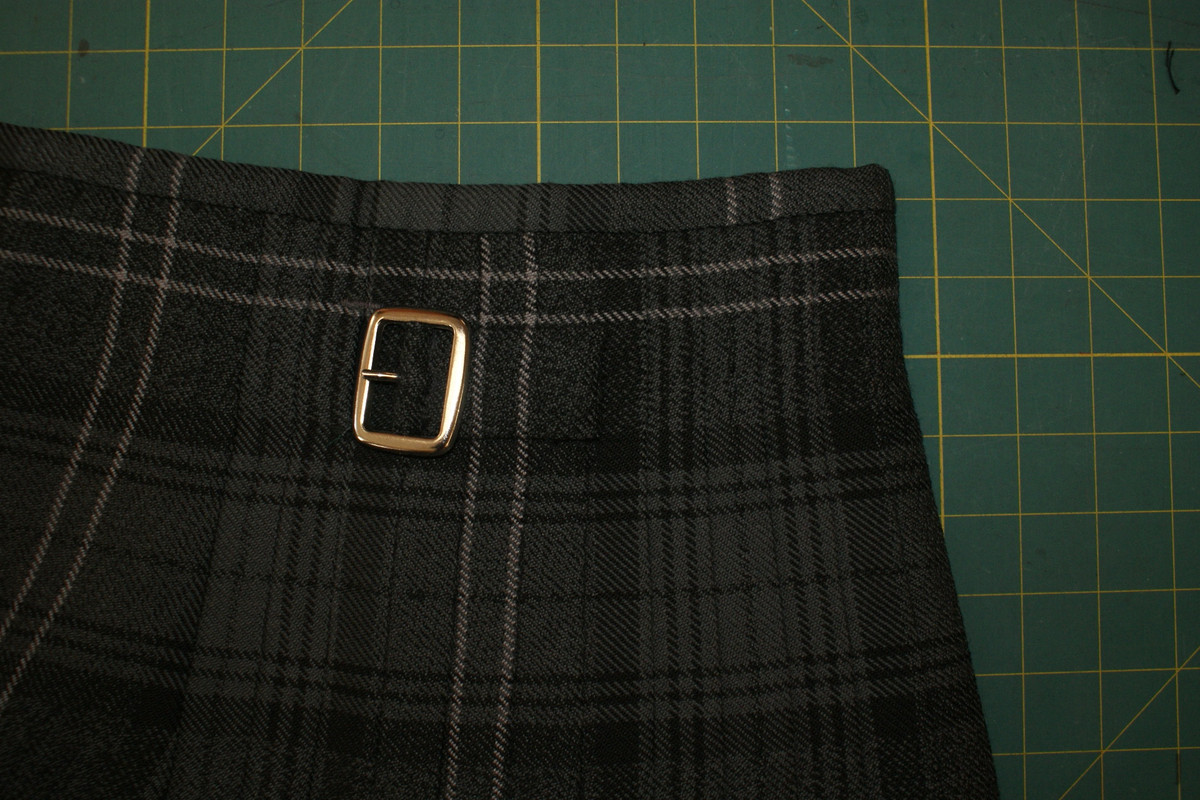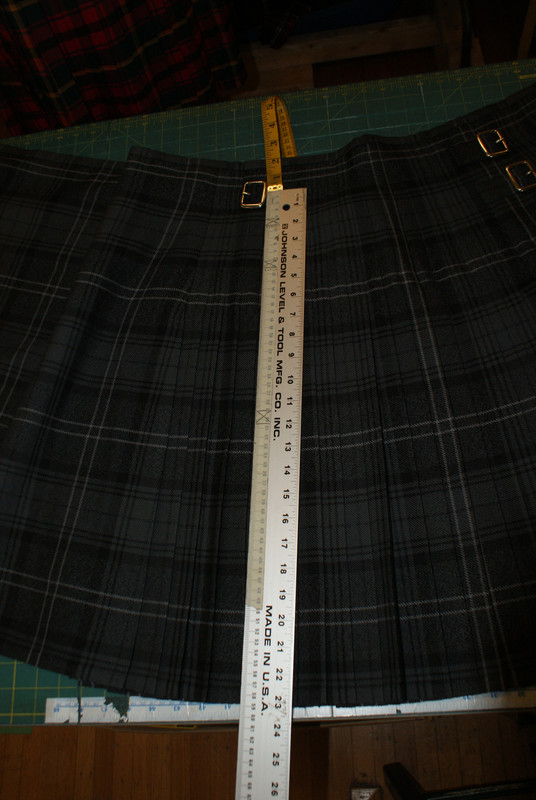|
-
19th March 22, 07:33 AM
#1
Kilt height guide. Sort of.
Could have gone into any of a number of sub forums, but it wouldn't be safe for work wherever I put it so here it is  Warning - sweary! Warning - sweary! 
https://www.youtube.com/watch?v=AJ_fFLaljY0
"Humanity is an aspiration, not a fact of everyday life."
-
The Following 6 Users say 'Aye' to Micrographia For This Useful Post:
-
19th March 22, 07:49 AM
#2
Well. He does have a point!  
" Rules are for the guidance of wise men and the adherence of idle minds and minor tyrants". Field Marshal Lord Slim.
-
The Following 4 Users say 'Aye' to Jock Scot For This Useful Post:
-
22nd March 22, 07:12 PM
#3
Very good 
Now are we going to have to debate if half-way up the knee is actually the correct length

-
-
22nd March 22, 09:35 PM
#4
My stand on the bottom edge of a kilt debate. -
I was taught that the correct height of the bottom of a kilt was just at the top of the knee cap.
This was arrived at, using an old kiltmaker trick.
When making a "Traditional Style" kilt the kiltmaker would have the customer kneel on the floor. The kiltmaker would then feel for the bottom of the customers ribcage at the side. They would then measure the length from the bottom of the ribs down to the floor.
This would then be made into a kilt with this length from the bottom of the ribs to the floor as the total length of the kilt.
But when making the kilt in the Traditional manner, the top straps are installed 2" below the top band of the kilt. From the center of the top straps to the top of the kilt the pleat shaping would taper outward to go over the bottom of the ribs. This area of the kilt is known as "The Rise".

The size of a kilt made in the traditional manner would be listed being as long as the "Drop". But the total length of the kilt from top band to selvedge would be "Drop + Rise".

When the customer put the kilt on they would chinch the top straps into the smallest part of the human body. This is the anatomical waist which happens to be just under the ribs at the side.
This would raise the bottom, or selvedge edge, up by the same 2 inches.
A human adult male patella or knee cap is just about 2". So the bottom, selvedge edge, of the kilt would end up right at the top of the knee cap.
Not understanding the old kiltmaker trick (OKT) many guys mistook where the bottom of the kilt should be when worn, thinking that if the kiltmaker measured down to the floor, then the kilt should just brush the floor when worn. This is a very often heard myth.
Last edited by Steve Ashton; 22nd March 22 at 09:39 PM.
-
The Following 3 Users say 'Aye' to Steve Ashton For This Useful Post:
-
29th March 22, 05:05 AM
#5
 Originally Posted by Regimental

Very good 
Now are we going to have to debate if half-way up the knee is the correct length.
For sure people can debate about their opinions on what is "correct" but when I put my historian cap on I just look at the evidence, which shows:
1) Kilt length has been fairly stable over the centuries, certainly showing less variance than most other aspects of clothing. The maximum variation amongst experienced kilt-wearers is only around 2 inches over the last couple hundred years.
2) Kilt length, within the same time period, has always varied a bit from individual to individual.
3) In the 18th century it tended to be around the top of the knee, while throughout the Victorian period and the 20th century it varied between the top of the knee and the middle of the knee, the kilt covering around 1/3 of the knee being average.
4) The army continued the slightly higher stance for a longer period that civilians tended to do.
5) There is a recent trend to keep the kilt a bit lower, with the kilt covering around 2/3 of the knee or even all of the knee. Seems to me that this trend is mainly powered by newer, inexperienced kilt-wearers, and Pipe Band drummers. (Why so many Drum Corps have low kilts while the Pipe Corps have proper kilts I have no idea.)
Last edited by OC Richard; 29th March 22 at 05:09 AM.
Proud Mountaineer from the Highlands of West Virginia; son of the Revolution and Civil War; first Europeans on the Guyandotte
-
-
29th March 22, 05:06 PM
#6
 Originally Posted by OC Richard

5) There is a recent trend to keep the kilt a bit lower, with the kilt covering around 2/3 of the knee or even all of the knee. Seems to me that this trend is mainly powered by newer, inexperienced kilt-wearers, and Pipe Band drummers. (Why so many Drum Corps have low kilts while the Pipe Corps have proper kilts I have no idea.)
Some of the lower kilt wearing is definitely driven by inexperienced kilt wearers not quite realising what it should look like.
But I think some of it, in my experience, is also driven more consciously by younger people wearing it in a more casual context, where wearing it at the correct height can feel/look a bit odd a bit odd around the waist (at least to people used to low waisted jeans etc) They therefore wear it lower around the waist, leading to it consequently sitting too low at the knees. This is so common, at least in Scotland, that its almost become a look in itself! Arguably, just as civilian kilts are shorter than military kilts due to the way they are worn, there is perhaps a case for kilts targetted at the casual / rugby / football crowds to be cut a little shorter still, to remove the issue.
-
-
30th March 22, 05:24 AM
#7
Here's a modern Grade One pipe corps, most pipers have some knee showing, though one fellow's kilt is drooping in the back.
How does a kilt stay up in front and droop in back like that??

But oh dear me the drummers!!
The goal is to have no leg showing, and to have an expanse of shirt visible between waistcoat & kilt.

Last edited by OC Richard; 30th March 22 at 05:27 AM.
Proud Mountaineer from the Highlands of West Virginia; son of the Revolution and Civil War; first Europeans on the Guyandotte
-
The Following User Says 'Aye' to OC Richard For This Useful Post:
-
30th March 22, 10:26 AM
#8
I enjoyed that more than I thought I would - thanks for sharing!
Some of my kilts hang top of the knee, some mid-knee. Sometimes I wear my kilts higher or lower, which further complicates matters.
If I had my druthers, all would hit top of the knee. This ensures your pleats don't beat on the back of you knees.
Last edited by KennethSime; 30th March 22 at 10:27 AM.
-
-
3rd April 22, 07:46 PM
#9
I see used kilts all the time, adult mens kilts, with lengths which in the old days would only be seen on youth's kilts.
Here's what happens when an adult man orders a kilt 22 inches long.
(Yes if he hiked it up to mid-knee it wouldn't be quite as obvious.)

Last edited by OC Richard; 3rd April 22 at 07:47 PM.
Proud Mountaineer from the Highlands of West Virginia; son of the Revolution and Civil War; first Europeans on the Guyandotte
-
-
3rd April 22, 11:37 PM
#10
I don’t agree at all that a 22” long kilt is inherently inappropriate for an adult, or would never have been seen back in the day. For plenty of men on the shorter side, that may be entirely the right length.
What matters is getting the right length for the height of the individual, not any particular absolutes. A short man wearing a long kilt is just as silly as a tall man wearing a short kilt.
-
The Following User Says 'Aye' to Regimental For This Useful Post:
 Posting Permissions
Posting Permissions
- You may not post new threads
- You may not post replies
- You may not post attachments
- You may not edit your posts
-
Forum Rules
|
|
Warning - sweary!

Bookmarks